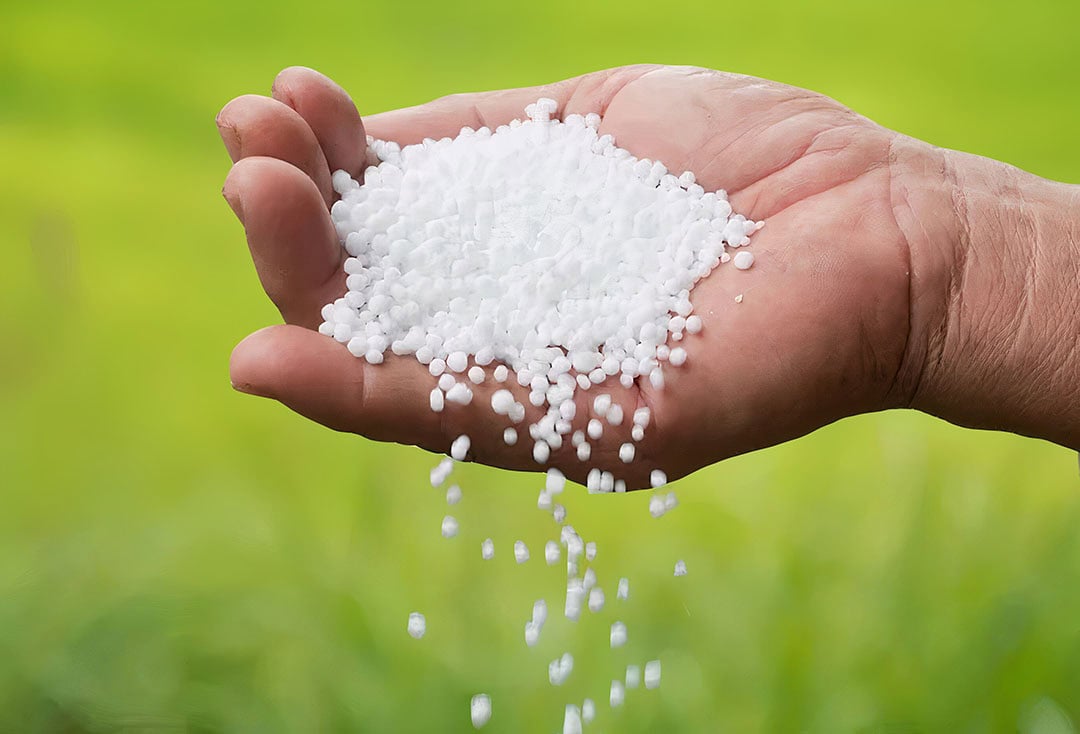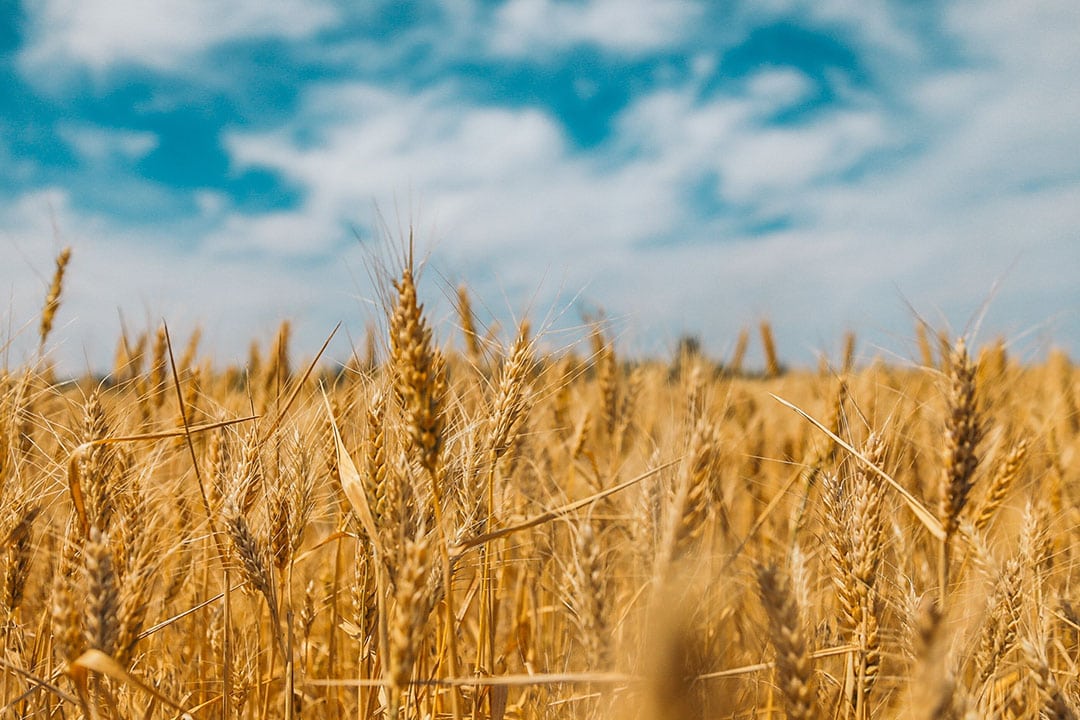Fertiliser market: Prices remain high, but cost relief is on the horizon

Fertiliser market experts agree that the prices of fertiliser will likely remain elevated for some time, since they are largely driven by high natural gas prices and the Russia-Ukraine conflict. But there is some cost relief on the horizon.
Gas prices reached unprecedented levels this year, but the situation has improved recently. Europe has had an extremely mild autumn. According to several sources, LNG-tankers are waiting for a chance to dock in European ports, because the gas-terminals are full. European spot gas prices have recently plummeted. This may be a temporary situation, but for the time being it will have a favourable effect on the prices of fertiliser.
Much depends on future developments in the global market. Given the abrupt end of the supply of natural gas from Russia, Europe will have to look for new sources. And what will happen in China with the current corona restrictions? If China relaxes its zero-COVID-19 policy, it will lead to an increase in the demand for natural gas.
Shipping costs significant factor in fertiliser market
The price of natural gas is not the only significant price factor in the fertiliser market. Shipping costs are also a driver of higher fertiliser prices. Analysts of the International Monetary Fund (IMF) point out that the cost of shipping a container on the world’s transoceanic trade routes increased seven-fold in the 18 months following March 2020, while the cost of shipping bulk commodities spiked even more.
But now shipping costs are also lower. The Baltic Dry Container Index is close to AUD $6,250 (US 4,220). This is a 25% reduction month-on-month and 55% reduction year-on-year.
Rabobank Australia says in its most recent Australian commodity outlook that there could be cost relief on the horizon. Despite recent events in global energy markets, European gas stocks have reached good levels for the coming winter, Rabobank confirms. This prompted a 90% reduction in the Dutch TTF natural gas spot price. “Global reference prices for urea, DAP and MOP decreased 10%, 5% and 6% respectively”, according to Agricultural Analyst Farm Inputs Vito Pistoia of Rabobank.
Minimal price reductions in some regions
Mr Pistoia explains that the reduced natural gas prices brought profitability back to manufacturers, with plant curtailments in Europe declining from 67% to 37% for nitrogen. This represents a 45% recovery in site numbers since this year’s energy price escalation and adds roughly 4 million ton of urea back to the supply chain on a yearly basis. In the coming weeks we will be able to see how much nitrogen production can bounce back.
Rabobank says that international prices are beginning to reflect this recent status change, but some regions show minimal price reductions. Baltic Sea urea spot prices moved from a range of AUD $ 860 (US $580) per ton to AUD 940 (US $634) per ton to a range of AUD $830 (US $560) per ton to AUD $910 (US $614) per ton during October, down roughly 3% month-on-month.
Text continues below image

Future for phosphate is misty
Analyst Pistoia says the future for phosphate is misty, due to Hurricane Ian’s damage to the US logistics system, Chinese export quota size uncertainty, and because how high worldwide stocks are. “In general, global prices show a steady and slow reduction caused by high levels of stocks. India is back in the export game but the benefit may be offset if China employs more stringent export quota’s in Q1 2023.”
High levels of potash stocks are also causing price reductions – and disparities of up to 20% between regions, Rabobank points out. “The high stocks in the Americas, especially in Brazil, might lead to further price reductions globally.” It remains a question when and how much the prices will go down.
Analysts of Australian analysis business Episode 3, expect fertiliser pricing will remain at elevated levels for quite some time. “We are getting to the stage where there is starting to become more demand rationing as the expense of inputs starts to bite. This could have longer-term impacts on yields.”
Call for more transparency in the fertiliser market
In the US, Europe and Australia, stakeholders call for more transparency in the fertiliser market. The Greens in Australia are calling for improved transparency in fertiliser pricing amid escalating input costs for farmers. Senator Peter Whish-Wilson has said he would speak to the Minister for Agriculture, Murray Watt (Labor) about the possibility of setting up public indexes that could track the price of fertilisers on the domestic fertiliser market.
Significant risks around fertiliser values
In its recent ‘Fertilizer Transparency Report 2022’, the Farmers Business Network (FBN) in the US says that, while fertiliser values have backed off the highs of early 2022, they still remain well above historical norms. “Data also indicates that prices may surge even higher in response to strong farmer demand in the coming months.”
The fertiliser market appears to be adjusting to the new global calculus of costs and trade disruptions, according to the report, but a simple and quick path to lower prices remains unlikely. “US farmers are starting to make purchasing and cropping decisions for the 2023 season with most input purchases and crop choices completed in the next six months, offering a limited time in which to see a sizable correction in fertiliser values.”
“With an ever-changing price environment, farmers face significant risks around fertiliser values and transparency with their local retailers. Fertiliser prices, unlike grain prices, are not publicly quoted by ag retailers and fertiliser supplier.”
Text continues below image

Great variability in fertiliser prices
The price of nitrogen fertilisers vary widely by geography in the US, based on production capacity of various fertiliser types. The nitrogen fertiliser costs reported by farmers show not only a great degree of regional variation, but even within regions there is variability. In September the average price of urea in the US was US $766 per ton. Prices varied from US $550 per ton to US $900 per ton.
The US has sizable natural gas and nitrogen capacity, but both are being diverted toward world markets to satisfy huge shortfalls, causing US nitrogen prices to remain elevated.
Support for European farmers
The European Commission has recently announced a series of measures to ensure the availability and affordability of fertilisers in Europe. The Commission aims to support several best practices, to help farmers optimise their fertiliser use and reduce their dependencies, while securing yields.
A framework for state aid enables governments to provide specific support to farmers and fertiliser producers. The Commission will look at using part of the of the agricultural reserve in 2023, worth €450 million (US $466 million), for farmers affected by high input costs.
The measures have to make sure that interventions such as nutrient management plans, soil health improvement, precision farming, and organic farming are widely adopted by farmers. The Commission says that the use of more organic fertilisers will be stimulated. “The substitution, whenever possible, of mineral fertilisers by organic fertilisers will reduce EU’s dependence on gas as well as the carbon footprint of the sector.”
Renewable hydrogen and biomethane for ammonia production
The Commission encourages member states to support investments in renewable hydrogen and biomethane for ammonia production, aiming for a transition to greener fertilisers. The Commission has also reached out to alternative suppliers of fertilisers to compensate for previous supplies from Belarus and Russia. Trade tariffs for ammonia and urea, used to produce nitrogen fertilisers, will be suspended.
Another measure included is improving global fertiliser market transparency, by contributing to relevant international initiatives concerning fertilisers, in particular the G20’s Agricultural Market Information System (AMIS). And the EU wants to pave the way for innovative approaches in support of integrated soil fertility management, applying a diverse set of site-specific soil fertility solutions.
Reduce nutrient losses
High and unstable fertiliser prices are challenging for EU farmers. Purchases of fertilisers represent around 6% on average of the share of input costs and up to 12% for arable crop farmers, according to the EU. Part of the EU’s so called Farm-to-Fork strategy, is to reduce nutrient losses by 50% by 2030 while preserving soil fertility. The EU says that – in addition to leading to clear economic and environmental benefits – this will reduce tensions in the global market too.



